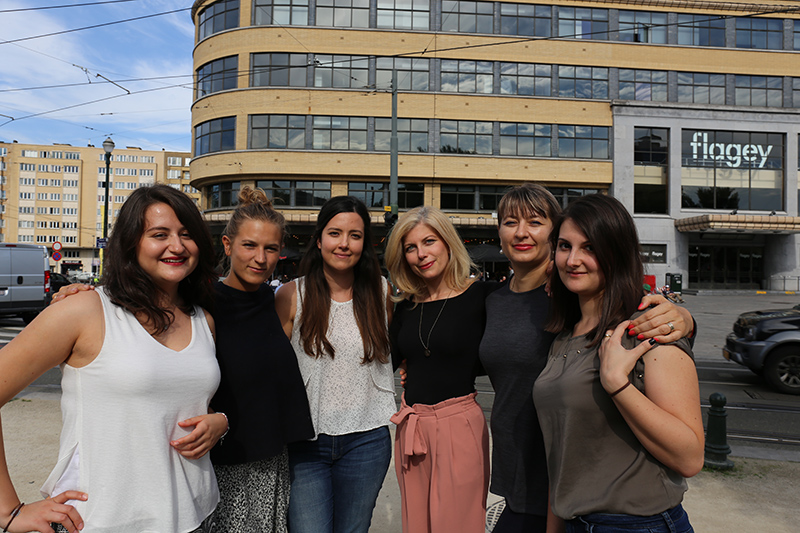On Saturday, the 26th of August, the US will celebrate Women’s Equality Day, which commemorates American women gaining the right to vote in 1920.
Over the years, many steps in the right direction have been taken on the path to women’s equality. Despite this growth, however, we still have a long road ahead when it comes to full equality in the workplace, both in the United States and here in Europe. One simple yet poignant example: for Fortune 500 companies, women make up only 6.4 % of CEOs. (These Are the Women CEOs Leading Fortune 500 Companies). What’s more, according to Eurostat, women make 16% less per hour than men. (Gender pay gap)
It becomes even more intriguing when we introduce the fact that women are often better qualified than men. According to a Eurostat infographic, in 2016, the number of women aged between 30 and 34 with a bachelor’s degree was 44% whilst for men it was 34%. (Eurostat statistics about women qualifications).
In an article published by Forbes, Caroline Turner explains that this happens because “the workplace recognises and values masculine over feminine ways of thinking, acting and leading—and that this creates a disadvantage for women. Business women who operate in feminine ways are often not seen as leaders. They may not “look the part” of a leader so may not get to try out for the role.” (Do Women Fear Power and Success?)
Gender discrimination is something that society has been trying to address. Companies are working to mitigate it. According to a McKinsey report about “Women in the workplace,” 75% of CEOs include gender equality in their top business priorities. (Women in the Workplace 2016 McKinsey report). Paradoxically, however, the same publication said that 45% of employees feel that their company doesn’t actually take any real measures to reach the goal of equality.
Beyond corporate concern, governments around the globe have also begun working to address this problem. The European Parliament has been one of the leaders in this, introducing an extensive motion in 2016 about how they can empower women in the digital sphere. Several measures were then proposed such as tax incentives for companies that actually implement gender equality initiatives and various rules that address sexism and gender stereotypes.
So far, the motion has been approved. (European parliament motion about empowering women in the digital area).
Despite corporate and governmental work, the game changer for improving gender equality might actually come from an unexpected place: the digital world.
Last week Forbes published an article about digital marketer Alaina Shearer. In her jobs she faced sexual harassment and gender discrimination and decided to found the organisation Women in Digital.
The main goal of Women in Digital is to organise events where women in the digital world can discuss ways to fight gender discrimination. In her own words, her mission is to give “every woman who experienced the discrimination that I experienced a network she can instantly tap into for help”. (One Woman Is On A Mission To Conquer Sexism In Tech By Connecting Thousands of Women)

No gender gap at ZN. Is it because of digital?
Interestingly enough, the Huffington Post recently suggested that digital could be the key differentiating factor in closing the gender gap at work. The thinking was that investing in digital fluency could accelerate a woman’s career. In parallel, new research from Accenture found that if governments invest in digital fluency for women, gender equality could be achieved in 25 years in developed countries. With the way it stands now, it will take more like 50 years, however.
The Accenture article goes on to explain that digital fluency doesn’t necessarily mean that every woman should be able to code. For Accenture, digital fluency is just the ability to post on social media, use an app or work remotely. In other words, these are day-to-day tools that can be easily learned but hold a vital place in a job environment. These tools enable women to work from home and manage better their family life with their professional life. (Is Digital the Great Equalizer When It Comes to Gender Equality at Work?).
Of course, there’s also an app for all this. Or rather, many apps. These apps are focused mainly on promoting a better work-life balance for working mothers in particular. For example, there is an app called Bsit which allows Brussels parents to find a babysitter to take care of their kids for a couple of hours. Another useful app is Find My Friends which instantly lets you know where your kids are (if they accept to share their location). Also interesting is Timyo, an app that prioritises your email inbox and reminds you which emails you should answer faster and when should you answer. For more, check out this link: (25 apps for working moms)
From apps to government motions, all of this work means steps are being made in the right direction. Until then, we work. Stick around for more updates and until next time, happy Women’s Equality Day!
References
- These Are the Women CEOs Leading Fortune 500 Companies, Fortune 500, June 7 2017
- Gender pay gap, European Commission, 2017
- European parliament motion about empowering women in the digital area, European Parliament, 8 April 2017
- Eurostat statistics about women qualifications, Eurostat, 2017
- Do Women Fear Power and Success?, Forbes, August 12 2017
- One Woman Is On A Mission To Conquer Sexism In Tech By Connecting Thousands of Women,Forbes, August 16 2017
- Is Digital the Great Equalizer When It Comes to Gender Equality at Work?,Huffington Post, March 3 2017
- 25 apps for working moms, Working Mother, June 19 2017











